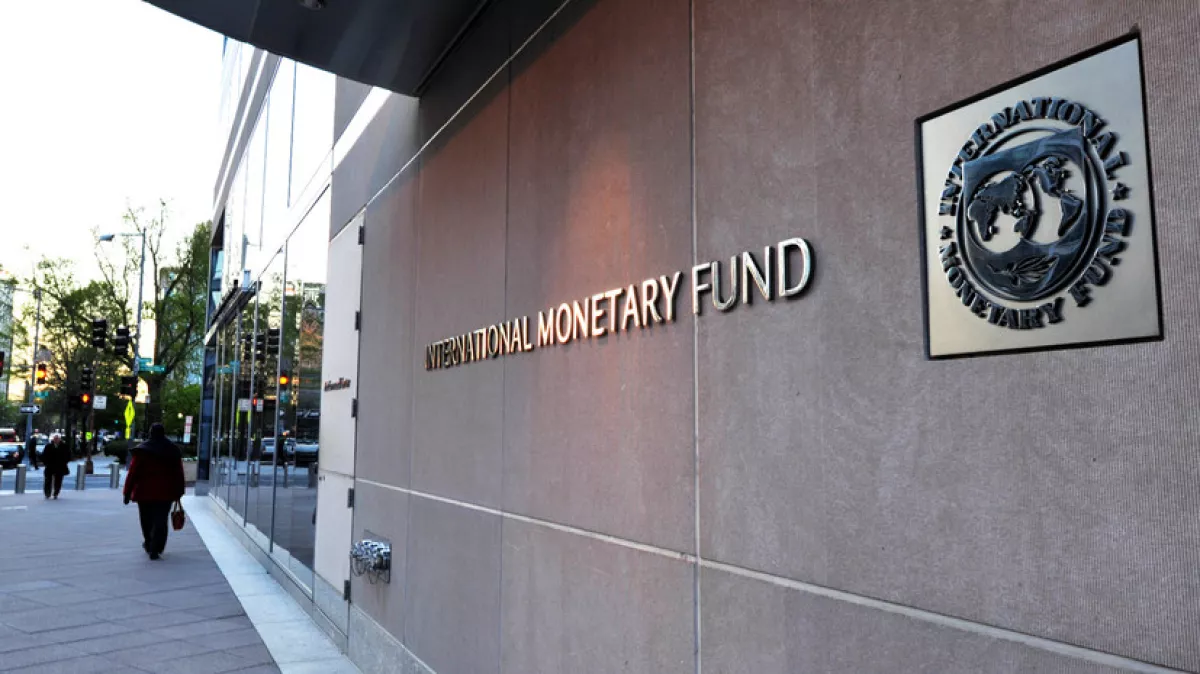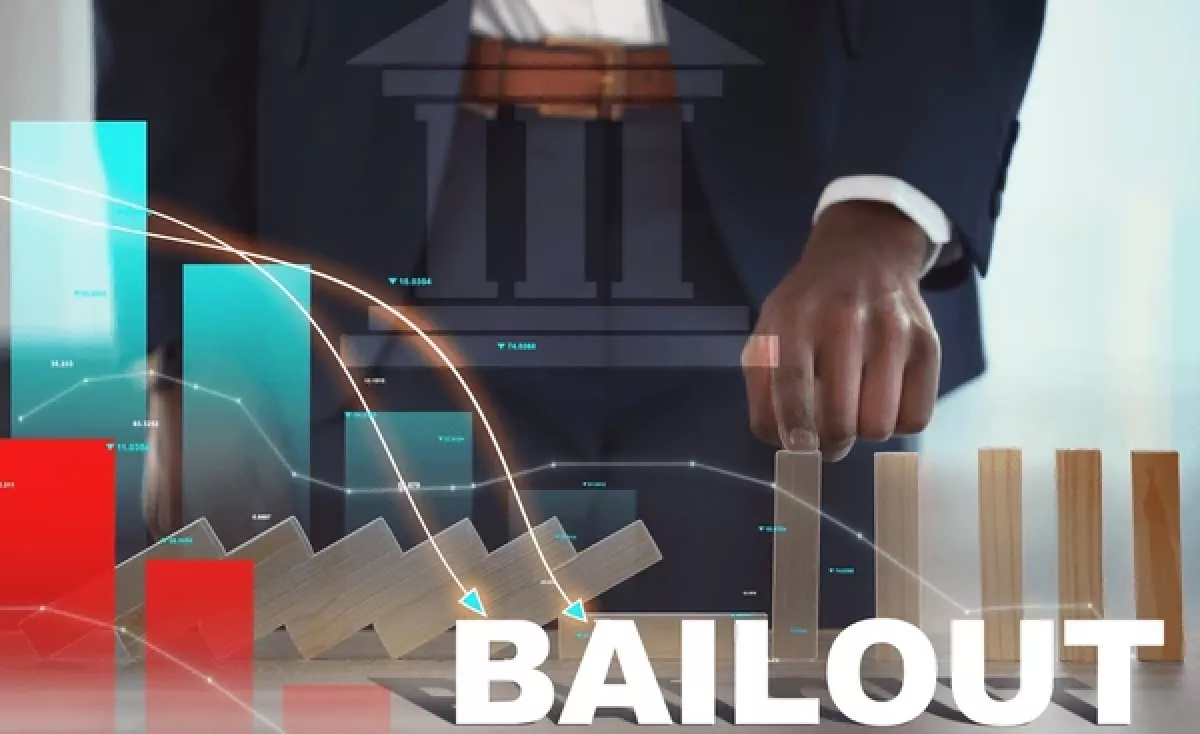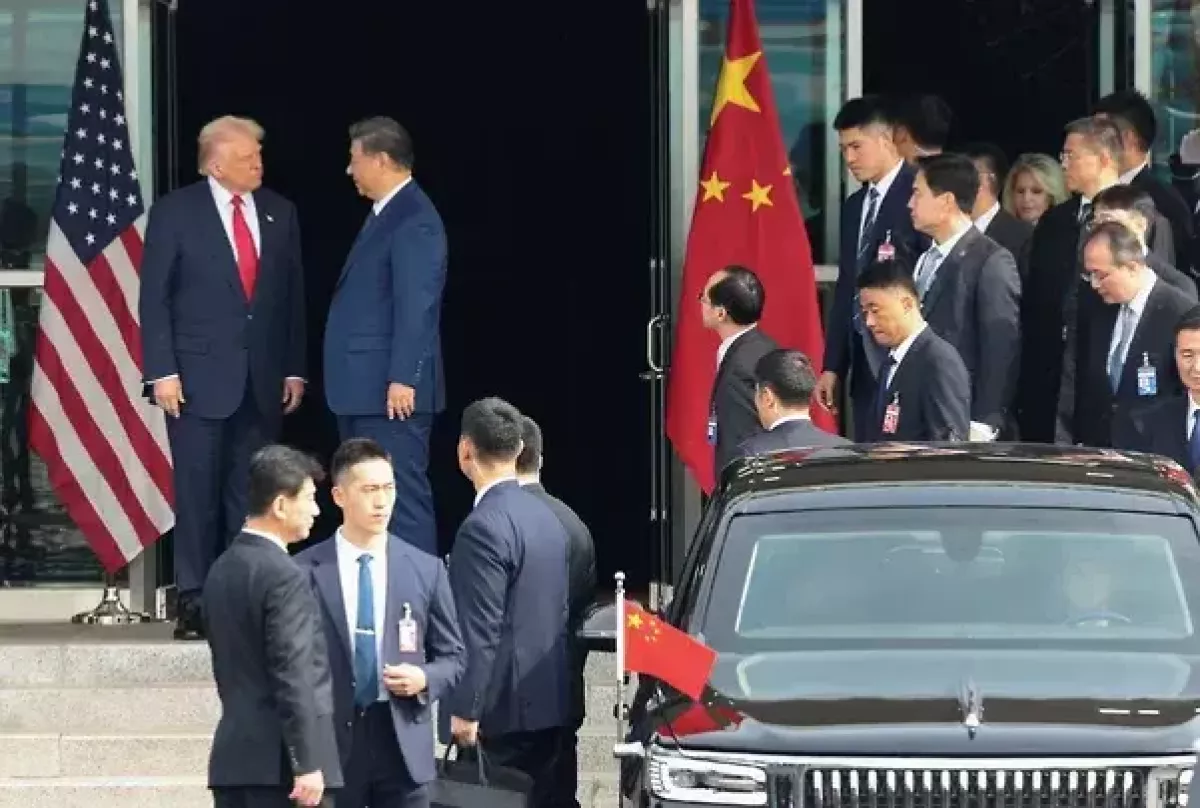IMF warning: Western countries running out of money G7 debt crisis
Last week began with a grim warning from the International Monetary Fund, which cited the national debt of leading Western countries as a potential cause for destabilising the global financial and economic system built by the West. Against this backdrop, China is quietly expanding its alternative international financial mechanisms, while non-Western countries are increasingly settling transactions in their own national currencies. The processes of moving away from the dollar and the euro are already visible to the naked eye in many countries, and storing savings in manats and rubles is becoming increasingly advantageous.

Who is airing the “collective West’s” dirty laundry?
The International Monetary Fund (IMF), which recently released its Fiscal Monitor report with gloomy forecasts, is not some UN-like organisation trying to please everyone with politically correct statements. It is one of the key command centres of the “collective West” in the financial and economic sphere.
Through the IMF, Western powers have successfully built and maintained their global hegemony over the rest of the world. It was also through this institution that they managed to present the Western model as the only correct one, masking its obvious flaws while dogmatically insisting on rejecting state intervention and turning non-Western countries into open-door playgrounds for irresponsible capital.
And now, the very same IMF, instead of continuing to reassure the world that the West will manage despite its problems, is sounding the alarm! That’s the only way to put it, as it openly admits that the bulk of global debt growth is concentrated in the very core of the collective West—the G7 countries. The fact that the IMF is bringing the West’s problem into the open signals that the situation has reached an extreme, and even the risks of acknowledging it are being set aside in favour of the urgent need to take action.

Curiously, the IMF pays particular attention to the problem of US government debt, which is about to surpass the corresponding levels of the most debt-ridden European Union countries, such as Greece. Naturally, the Fund’s experts also note the rise of China’s debt; however, against the backdrop of American debt, currently standing at either 121% or even 125% of GDP, China’s 88% seems less impressive. Yet, one cannot expect them to be generous toward a global rival—they emphasise China’s rising debt while conveniently “forgetting” to mention that it is increasing against the backdrop of a functioning economy, positive foreign trade figures, and technological development. This is not the case for a number of Western countries, especially in Europe.
What is noteworthy, however, is the acknowledgement of such large-scale problems within the collective West and its leaders. After all, global hegemony relies far more on perceptions of the invincible power of the hegemon—whether supported by facts or not—than on military might. In other words, the global discourse around the “indispensable nation” or the “empire on which the sun never sets” has always mattered more than even the strongest air forces, navies, or marine corps.
The decline of the West, measured in money
Western financial experts say that global government debt is now growing at an unprecedented pace in modern history—but not everywhere. The IMF report cleverly camouflages the trend of weakening global positions of the West.
We are told: “Although the number of countries with debt exceeding 100% of their own GDP is expected to gradually decline over the next five years, their share of global GDP is likely to increase.”
The countries reducing their debt are predominantly non-Western, while those increasing it are almost entirely Western—and they are doing so at the expense of the rest of the world. In other words, their growing share of global GDP amid rising debt represents a transfer of money from other countries.
But perhaps, despite the questionable morality of this process, there is nothing to fear? Empires have always extracted resources from the rest of the world. Yet everything has a limit. This is not just a matter of our subjective perception that non-Western countries are no longer willing to tolerate the current order. According to IMF calculations, even on a GDP basis, total global government debt (mostly Western debt) is expected to exceed 100% of global GDP by 2029. This would be the highest level since 1948.
This date is noteworthy because, much like the present moment, a dire economic situation back then also led to a shift in global hegemons. It is important to emphasise that it was the economic situation, rather than direct military destruction, that played the decisive role: compared to Eastern Europe, Western Europe—except for certain areas of France and a few cities in the United Kingdom—was largely spared from wartime devastation, and the military losses of the respective countries were minimal. Yet the bankrupt British and French empires were forced to yield to the new hegemon, the United States.
In other words, today the collective West faces a situation where the problem is not even a challenge posed by some rising global power, but rather that its own forces are deserting it. As the IMF notes, the governments of the world’s leading powers are unable to stabilise their debts, which are growing faster than previously forecast.

Previously, during the long period of Western economic expansion—from the late 1980s, when Western powers were “consuming” the new markets of the former Eastern Bloc and Eurasian resources including Russian ones—Western governments could borrow money at near-zero interest rates. That era is now long gone. Meanwhile, the banking and financial sector in the West has largely slipped out of government control and, in fact, can increasingly dictate its will to authorities. This has been particularly evident through hundreds of billions of dollars in government bailouts to banks across the West since the 2008 financial crisis, as well as allowing banks to issue loans not backed by existing funds—that is, effectively creating money and driving inflation.
In short, governments can no longer extract leverage from the financial industry. They are forced to borrow at high interest rates, which means that in some Western countries the costs of servicing public debt now exceed military expenditures.
The US situation is better than Europe's
The fastest growth of government debt is occurring in the United States. In 2023, the country’s gross public debt stood at 119.8% of GDP; today it has risen to 125%, and by 2030 it could reach 143.4%.

Global liberal elites opposing President Trump are eager to amplify this problem, emphasising that Trump’s tariffs and other measures “haven’t helped,” although it is still too early to judge. According to them, debt levels will soon approach those of Greece (146.7%), although thanks to multi-billion-euro injections from the EU, the Greeks plan to reduce it to 130.2% by 2030. At first glance, other Western countries appear somewhat better off (France: 116.5%; Spain: 100.4%; Germany: 64.4%).
However, firstly, these are countries whose economic situations are far worse than that of the United States. On October 30, European automakers warned of a possible complete halt in the industry.
Secondly, there are clear trends of rapidly deteriorating financial conditions in EU countries, with potentially catastrophic consequences for international politics. The Germans, for example, are increasing public debt to fund militarisation, turning the situation into a potentially fatal one. In fact, to ease their debt burden, Berlin will need to leverage military power to enhance economic capabilities—by accessing new markets and securing new resources, for example.

This pushes the entire continent toward new heights of escalation, especially considering that for almost all EU–NATO countries, investments “in war” have become the most important area of growth in government spending. The only factor slowing European countries’ slide toward conflict is the demographic crisis.
In the case of the United States, financial pressures weigh on the government to a much lesser extent, which is why Washington has recently behaved more calmly on the world stage than the EU. At the very least, it is clearly not rushing to expand military confrontation with either Russia or China. The financial situation of Washington was succinctly summarised by Forbes in a series of points:
“The U.S. owes $38 trillion, and can print [and repay creditors] every dollar of it. When you can create the money you owe, does [real] debt even exist? The real risk isn’t default - it’s what those dollars will be worth. If trust in the dollar slips, inflation hits and markets tumble.”
In other words, unlike European countries—which can no longer conduct independent monetary policy, having ceded it to EU bureaucracies—the US still retains this ability. This reduces the immediate severity of the debt crisis in the coming years, though it does not eliminate the question of the financial position of the world’s hegemon.

We are currently observing rather ambiguous signs—for example, the US–China trade negotiations, in which Washington is effectively stepping back from the hardest line initially declared. This was evident during the meeting between President Trump and Chairman Xi Jinping earlier last week.
Another example: it was revealed last week that the US is withdrawing some troops from certain Eastern European countries to redeploy them to Asia in a posture against China. What is interesting here is not only that simultaneously confronting both Russia and China proves challenging even for the global hegemon, but also that, strategically, the troop withdrawal will be offset by the expansion of the American tactical nuclear arsenal in Eastern Europe.
This is already a known example of deterrence organised without increasing spending or conventional forces. A similar logic was applied by Belarus in 2023, when it stationed Russian tactical nuclear weapons on its territory in response to the looming potential threat of expanded Ukrainian military operations on Belarus, while Minsk did not want to engage in a risky regional race to increase the size of its army or conventional armaments.
Strategic devaluation
Creeping inflation of Western currencies is already noticeable even outside the West. However, it is now time to consider the likelihood of a “strategic devaluation” by both the US and the EU. Such a move would reduce pressure on the governments of these countries, including in the political sphere, expanding the range of possible options for adjusting foreign policy.
Strategic devaluation is a long-known tool. For example, the US government has repeatedly employed such measures. Notable examples include President Roosevelt’s gold confiscation in 1933, which resulted in a 69% devaluation, and Nixon’s abandonment of the gold standard in 1971, which dealt a similar blow to the dollar’s purchasing power.
Roosevelt used this measure to lift the country out of the Great Depression and isolationism. Nixon aimed to overcome economic stagnation, end the Vietnam War, and open rapprochement with China. In other words, these were not purely economic actions; on the contrary, they relieved pressure on the government, enabling it to pursue a broader foreign policy rather than being constrained to a specific course.

An even more interesting example is the so-called Plaza Accord, a coordinated 25% devaluation of the dollar achieved by the “collective West” in 1985. This measure was, incidentally, successfully used to improve the economic indicators of the United States, while the dollar holders—who were never asked—effectively paid the price for this improvement.
Meanwhile, populations in many Western countries are already noticing that global powers and their currencies are experiencing instability. As a result, storing savings in one’s national currency—provided it is sufficiently stable—is becoming increasingly attractive. At the very least, it is more convenient: it is easier to monitor and understand the actions of one’s own government and the country’s economic situation.








